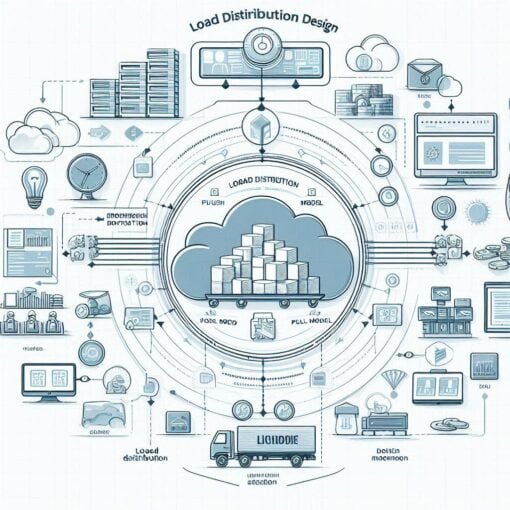
updated: July 2024
Loose Coupling in Cloud Design: A Key to Scalability and Reliability
When venturing into the realms of SOA (Service Oriented Architecture) or cloud services like IaaS (Infrastructure as a Service) and PaaS (Platform as a Service), the concept of Loose Coupling is pivotal. Initially, it seemed elusive to me, but a simple analogy clarified its essence:
Consider an Apple iPod with a non-replaceable battery. When the battery dies, the entire device becomes unusable. This is akin to a tightly coupled system where the device’s operability is inextricably linked to the battery. Conversely, a loosely coupled system would allow for the battery to be replaced independently, much like many other devices we use daily.
In cloud design, Loose Coupling is instrumental in enhancing the scalability and reliability of applications, leading to more straightforward automation. It advocates for breaking down complex IT systems into smaller, simpler components that work in concert to deliver services.
Characteristics of a Loosely Coupled System:
- Independent Scaling: Each component can scale as needed without affecting others.
- Separate Modification: Components can be updated individually.
- Isolated Failures: A failure in one element doesn’t compromise the entire system.
- Simplified Recovery: Restoring service after a failure is more manageable compared to a tightly coupled system.
These attributes render a loosely coupled system more manageable, reliable, scalable, and conducive to automation.
Decoupling in Practice:
A classic example of decoupling is segregating a database service from an application server onto a dedicated server. This principle extends to designing loosely coupled applications or disentangling existing complex systems.
Creating a Loosely Coupled Application:
To forge a loosely coupled application, begin by separating components and establishing standard communication interfaces. Consider implementing automatic service discovery and asynchronous integration methods. Additionally, ensure failures are handled gracefully, minimising impact on the system.
Loosening as a Mindset:
Before finalising a component, ponder these questions:
- What if this element fails? What’s the ripple effect on the service?
- Can I scale, modify, or recover this component without impacting other system parts?
Your design should be re-evaluated based on these considerations. Here are strategies to foster Loose Coupling:
Standard Communication Interface:
Opt for standardised interfaces and APIs, like RESTful APIs, over bespoke connections. This reduces dependencies, as components communicate through these universal interfaces. Amazon API Gateway is a robust tool for developing such APIs, serving as the “front door” for applications to access data and functionality.
Built-in Service Discovery:
Components need a mechanism to locate and communicate with each other. An automatic service discovery built into your system is preferable, allowing for dynamic interaction without hardcoded information. Amazon ELB (Elastic Load Balancing) facilitates this with its unique DNS names, providing reliable service discovery.
Asynchronous Integration:
For interactions that don’t require immediate responses, an intermediary like Amazon SQS (Simple Queue Service) can be used. This queuing system allows one component to generate events and another to consume them asynchronously, enhancing decoupling.

Graceful Failure Handling:
A resilient system gracefully recovers from faults. Amazon Route 53 DNS failover can detect server failures and reroute traffic away from the affected component. Front-end caching and queuing failed tasks for later processing are additional strategies to ensure continuity.
By embracing Loose Coupling, you can create systems that are not only more resilient and adaptable but also easier to manage and automate. It’s a mindset that transforms the way we approach cloud architecture and application design.




